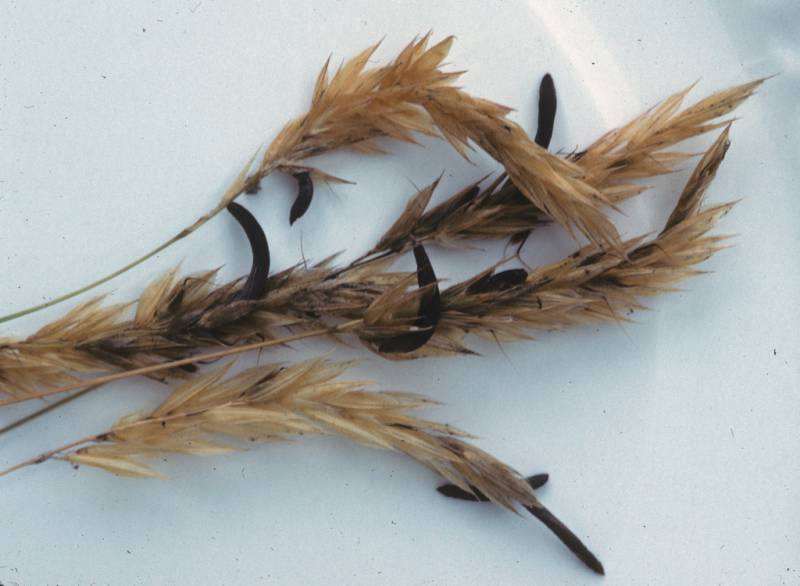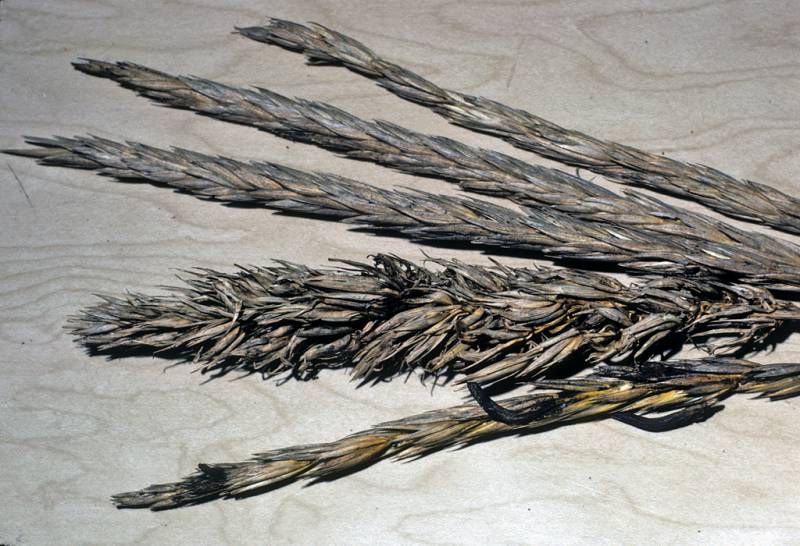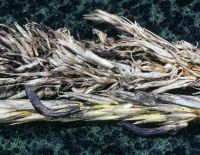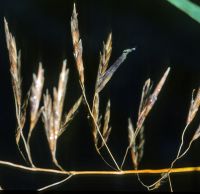Habitat: grassland
Substrate: grass, especially rye
Conservation Status: Not of concern
Edibility: Poisonous, causes ergotism or St. Anthony\'s Fire
Poisonous, causes ergotism or St. Anthony\'s Fire
Fruibody consisting of two stages, a sclerotium infecting various grasses and a stroma that develops on damp fallen sclerotia that were formed during the previous year; sclerotium 1.5-3.5 cm long, more or less cylindrical with tapered rounded ends, typically curved, with shallow longitudinal grooves, hard, purplish black to brownish black; interior hard, white; stroma divided into a head and stalk; head 1.5-3 mm in diameter, rounded to somewhat flattened, orange-yellow to ochre or pale purple, darkly punctate from the protruding ostioles of embedded perithecia; stalk up to 3 cm long, 1-1.5 mm thick, cylindrical, smooth, usually twisted, colored like the head, attached to the sclerotium by a dense, white mycelial mat.
The fungus is believed by some authors to be the cause of the abnormal behavior exhibited by individuals accused of being witches in Salem, Massachusetts. The extremely potent hallucinogen LSD as well as ergotamine and other alkaloids are derived from this fungus.
Sources: Beug, Michael W., Alan E. Bessette, and Arleen R. Bessette. Ascomycete Fungi of North America. Austin, University of Texas Print, 2014. Roberts, Peter and Evans, Shelley. The Book of Fungi. Chicago, The University of Chicago Press, 2011.
PNW Herbaria: Specimen records of Claviceps purpurea in the Consortium of Pacific Northwest Herbaria database
CalPhotos: Claviceps purpurea photos







